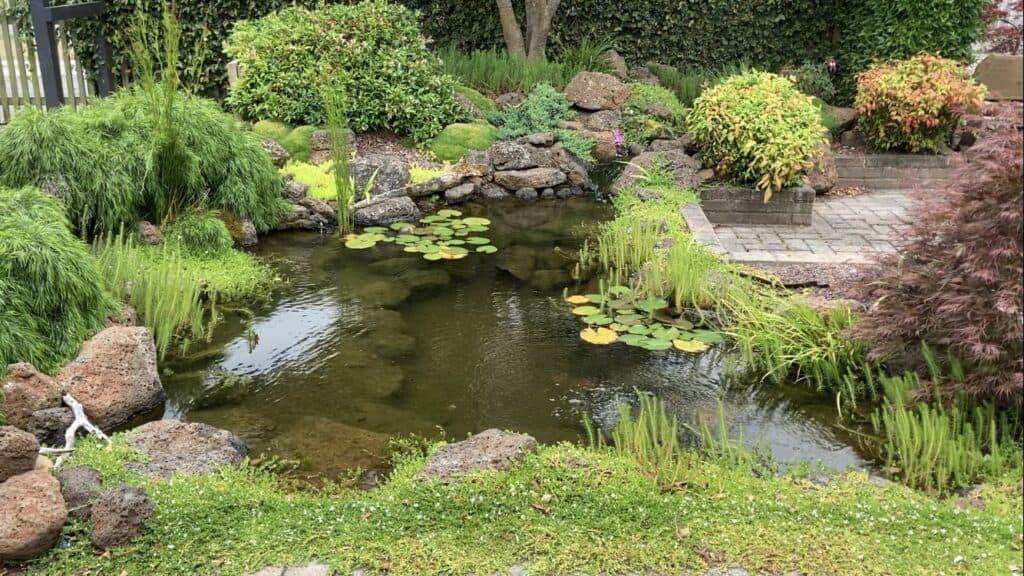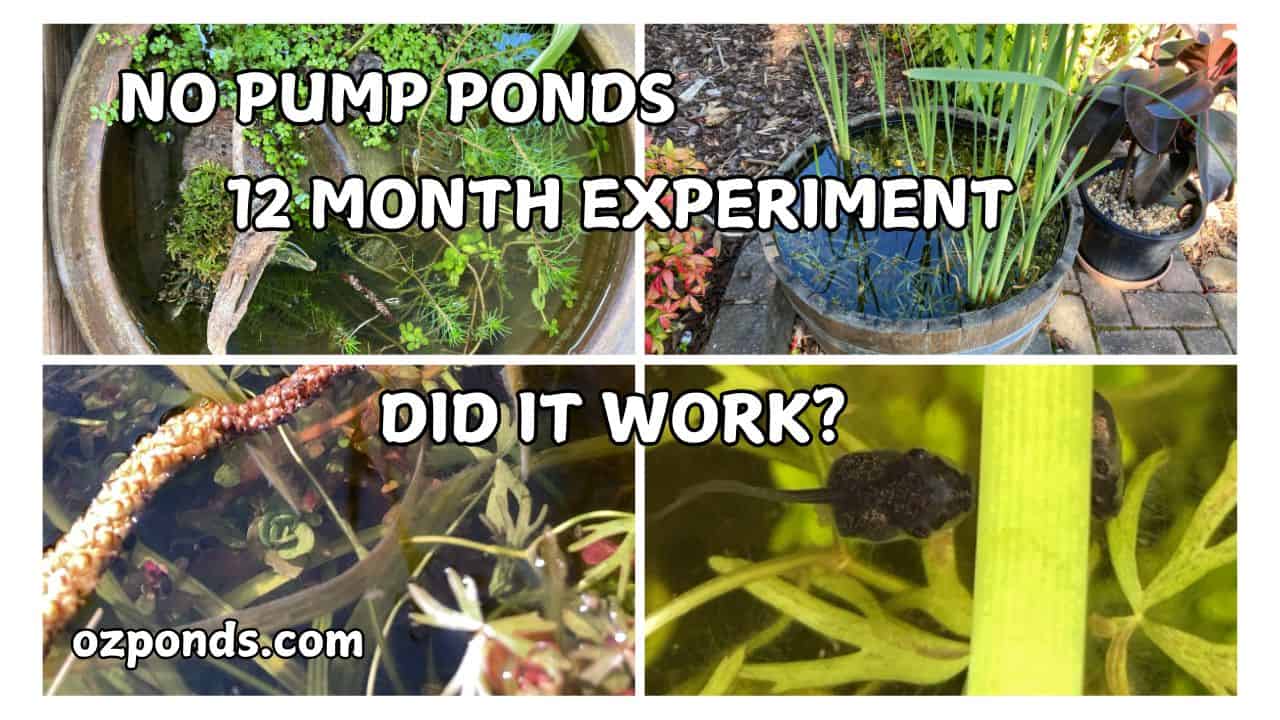About a year ago, I embarked on a new pond experiment: building small ponds with no filters or pumps.
While I’ve tried ponds without mechanical filtration before, this time I used a method popularized by aquarists Diana Walstad and Father Fish.
This natural approach, commonly used in aquariums, relies on soil and sand layers to create a balanced ecosystem that supports plant and animal life without requiring filtration.
Below, I’ll share what I learned over the past year, including which setups worked best and how different conditions, like sun and shade, influenced each pond’s health.
The Basics of the Walstad Method for Ponds
Using the Walstad method, I built each pond with a bottom layer of plain dirt from my garden, followed by a layer of sand. This “dirt layer” does several things:
- Provides Nutrients for Plants: Plants grow directly in this soil, accessing natural nutrients.
- Supports Bacteria and Microbes: These microscopic organisms help maintain balance by breaking down organic matter.
- Reduces Algae Growth: The sand layer locks the nutrient-rich dirt beneath it, helping to prevent algae blooms by limiting the nutrient mixing with the water.
How it works: Organic material like leaves and fish waste settles on the pond’s bottom. Over time, it decomposes, with nutrients gradually filtering through the sand and into the dirt layer, where they fuel plant growth—essentially creating a mini compost system right in the water.
Results from Different Pond Locations: Sun, Shade, and Mixed
To see how environmental conditions impacted each pond, I set up a few different ones:
- Full Sun Pond: This pond had minimal plant life and developed a thin layer of algae on the water surface. It stayed clear enough to see through, but the warmth increased algae.
- Part Sun/Part Shade Pond: This location had the most plant growth, especially cattails. These plants likely absorbed a lot of nutrients, reducing algae growth. I also added Pacific blue eyes and native shrimp here, which thrived during warmer months.
- Full Shade Pond: This small pond was the clearest, showing no algae growth at all. It held a small group of cherry shrimp, which reproduced well without significant maintenance.
If you want to see each pond watch the video below:
Seasonal Changes: Winter Challenges and Spring Revival
Winter brought some changes to each pond, particularly the one in the part sun/shade area, which saw a die-off in its plant life, including cattails and floating plants.
Cooler temperatures likely slowed down the bacteria and microbes, leading to a slight algae increase that I managed by hand.
As spring returned, so did plant growth—and along with it, a noticeable increase in tadpoles and native shrimp populations. It was a rewarding cycle, proving that a natural, filter-free pond can support a robust ecosystem with minimal maintenance.
Pond Maintenance Insights from 12 Months of Observation
Over the year, my maintenance was surprisingly minimal:
- Water Top-Ups: During the hot summer, I topped off each pond with water from a nearby pond. I didn’t need to change the water or add filtration.
- Algae Management: A small amount of algae formed in winter, particularly in the part-shade pond, but I simply removed it by hand when necessary.
- Trimming Dead Plants: Removing dead cattails and other plants in early spring helped the ecosystem bounce back.
The full shade pond, likely due to lower temperatures and light exposure, required the least maintenance and never developed algae.
Unexpected Surprises: Wildlife and “Hitchhikers”
Interestingly, I found some surprises along the way. For example, a tiny Pacific blue-eye fish appeared in the full sun pond, likely hitchhiking as an egg from another pond. I also noticed cherry shrimp breeding successfully in the shaded pond.
Year One Reflections and Looking Ahead
This experiment in low-maintenance pond building has been both enjoyable and insightful. Despite the simplicity of each setup, they’ve all flourished in their own way, proving that with the right balance, ponds can maintain themselves naturally.
Going into year two, I’m curious to see if any new challenges arise or if the ponds will continue to thrive. I think this natural balance will hold up over time, but only time will tell.
If you’d like to see how I built these ponds, check out the linked videos below, or read this article I wrote.
Thanks for reading!

Join my free email list
If you would like to join my free email list click the button below.
I promise I won’t spam you, I’ll only send information I think can help you save money building and maintaining a pond.

